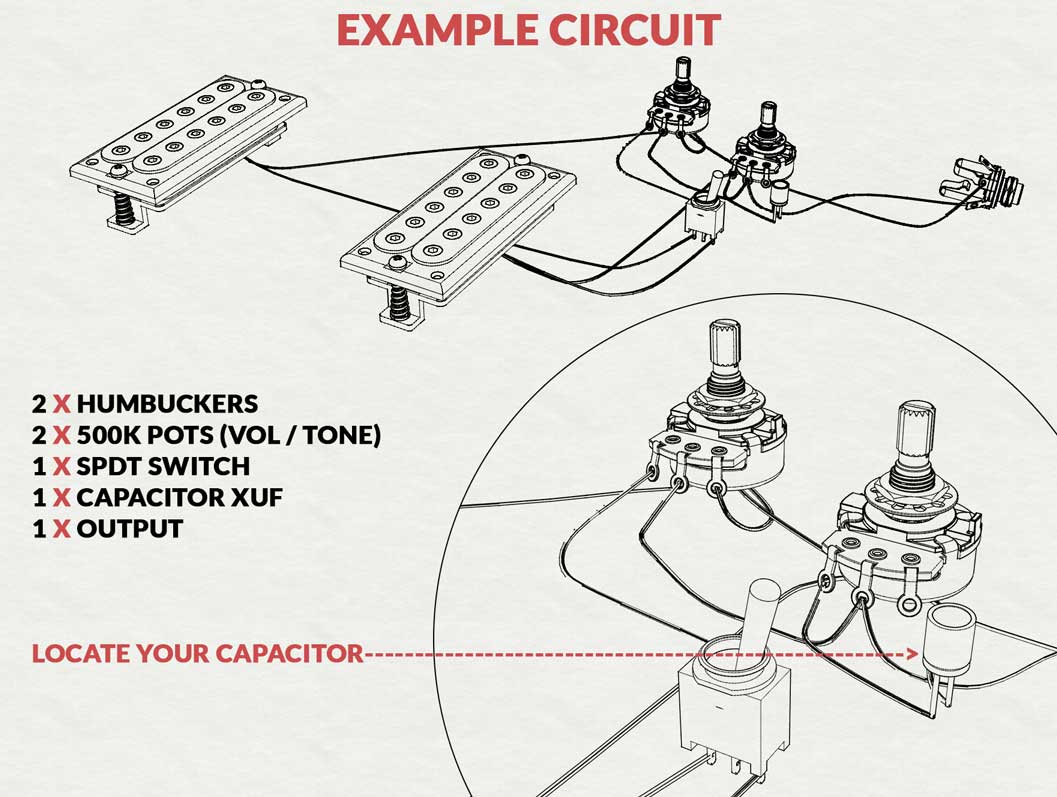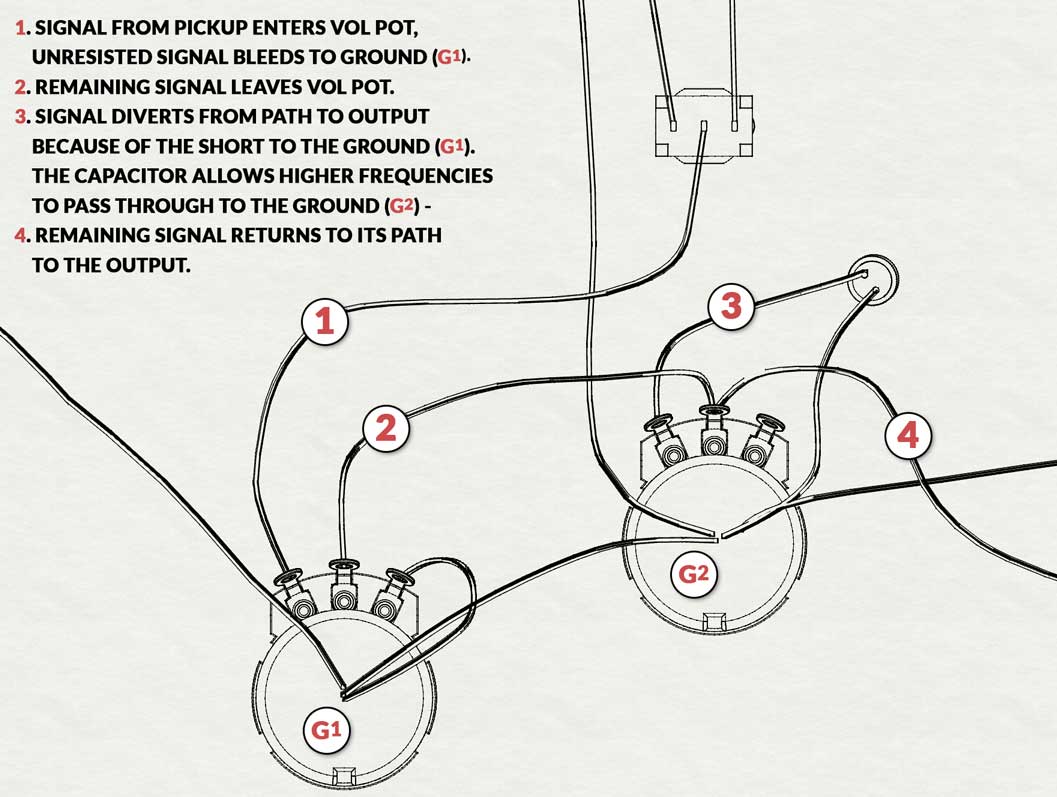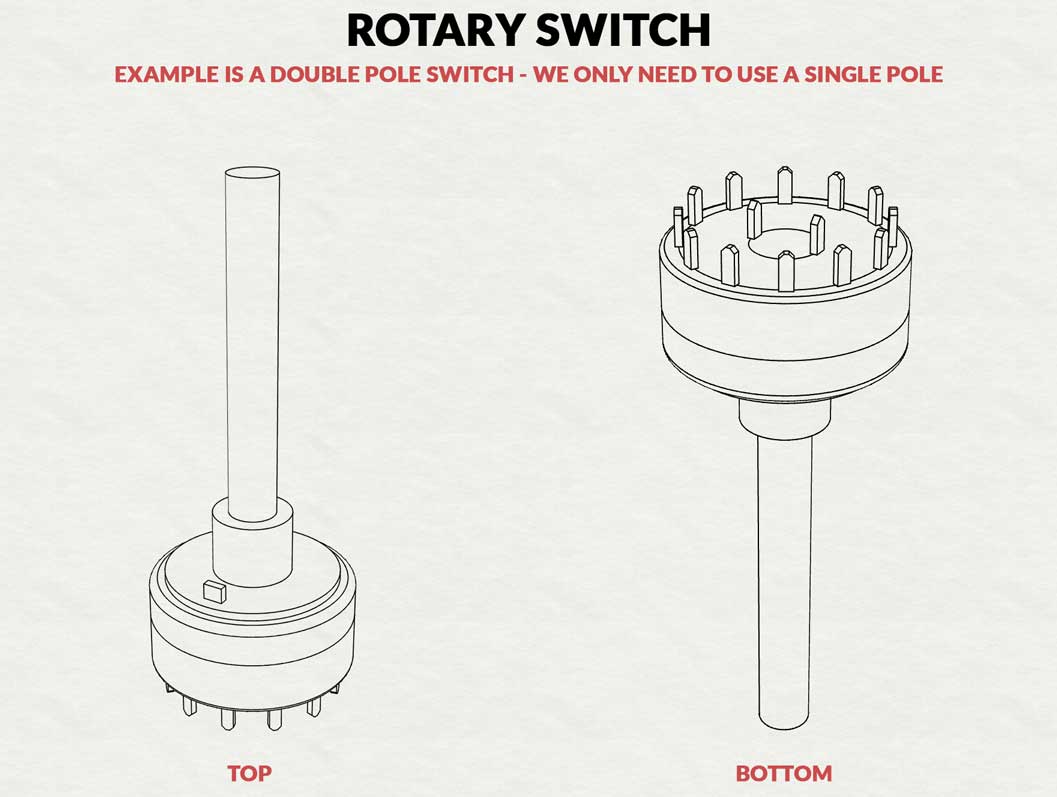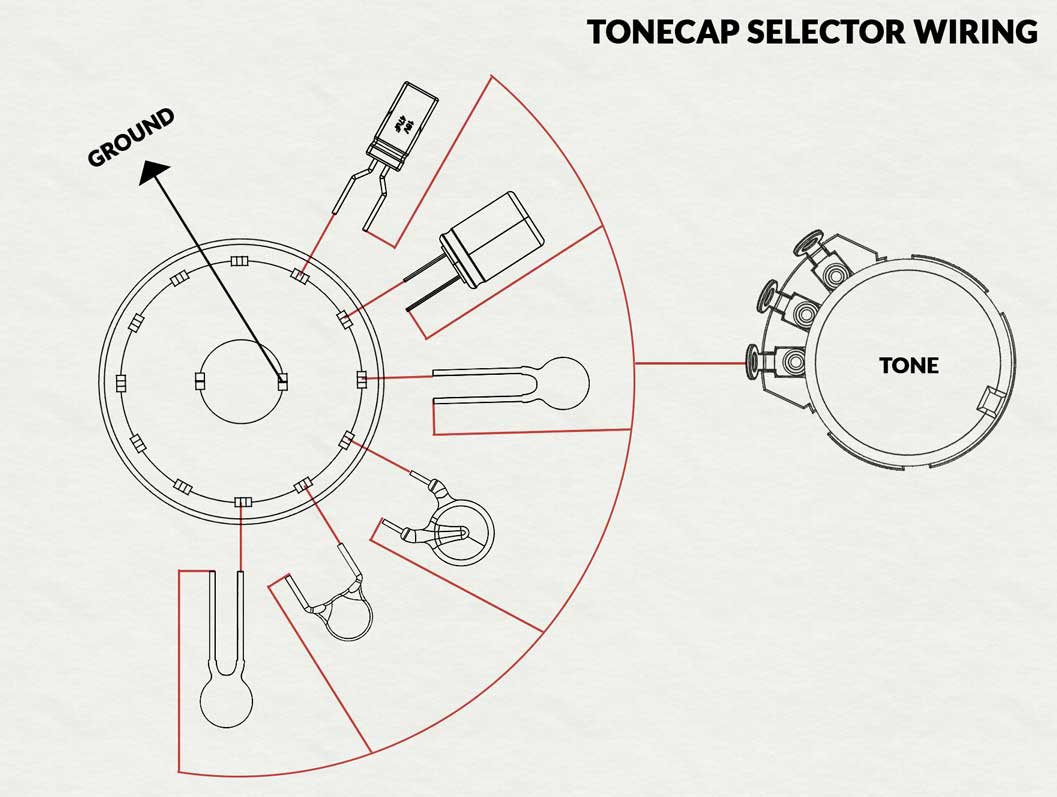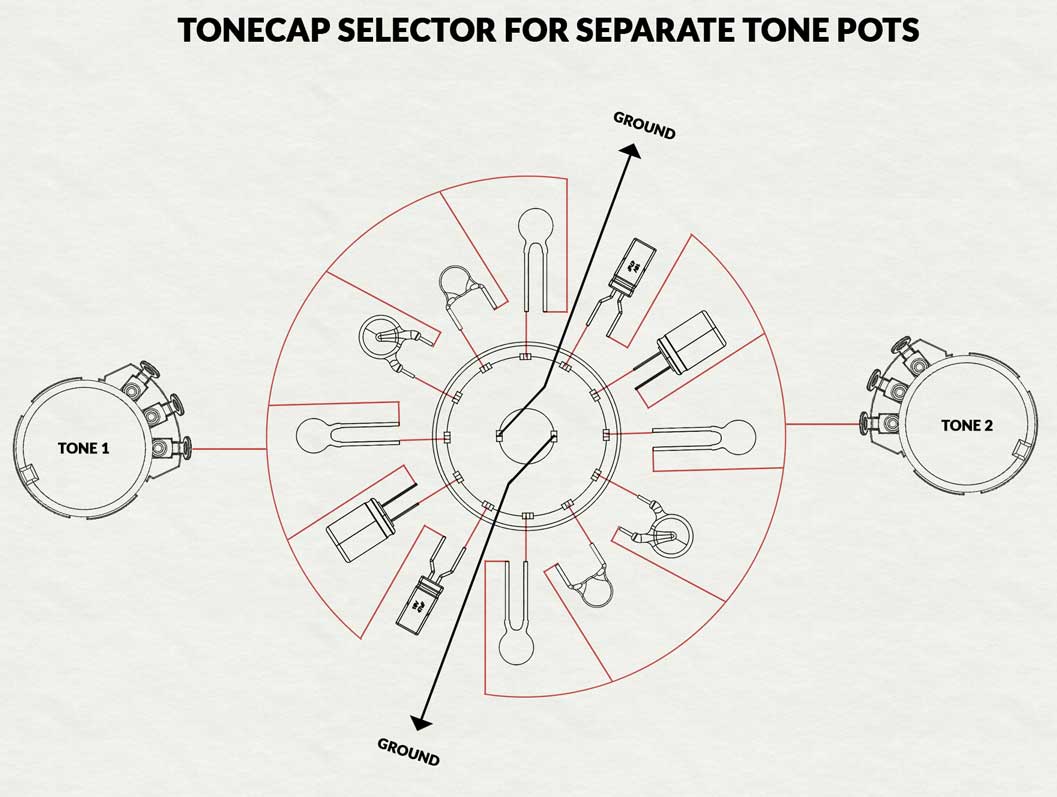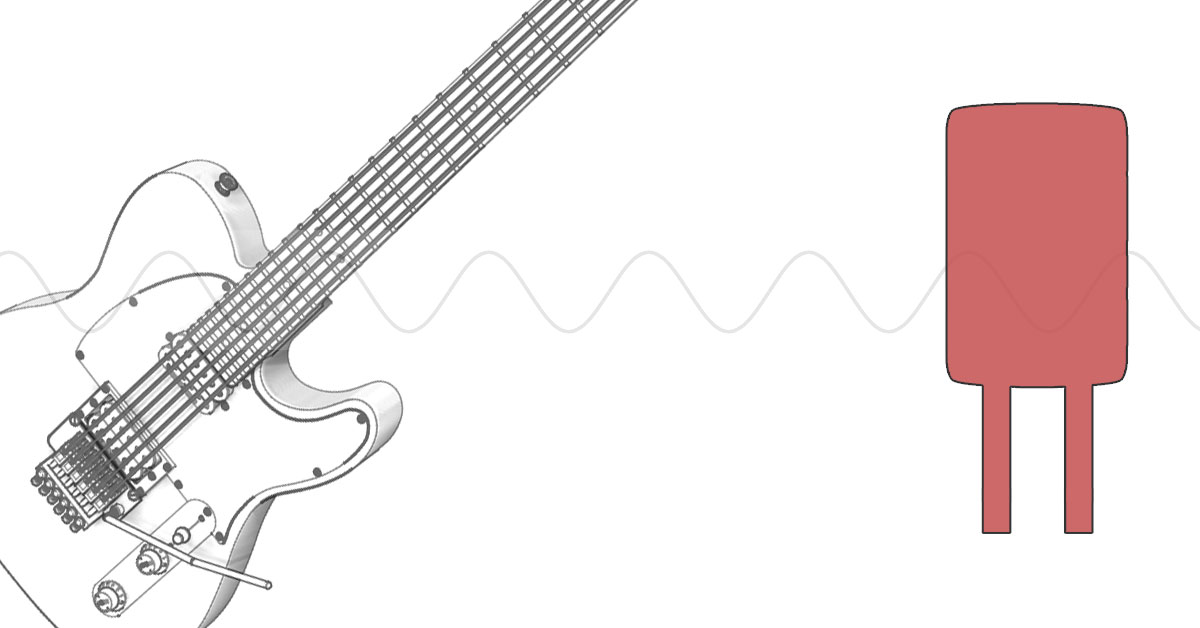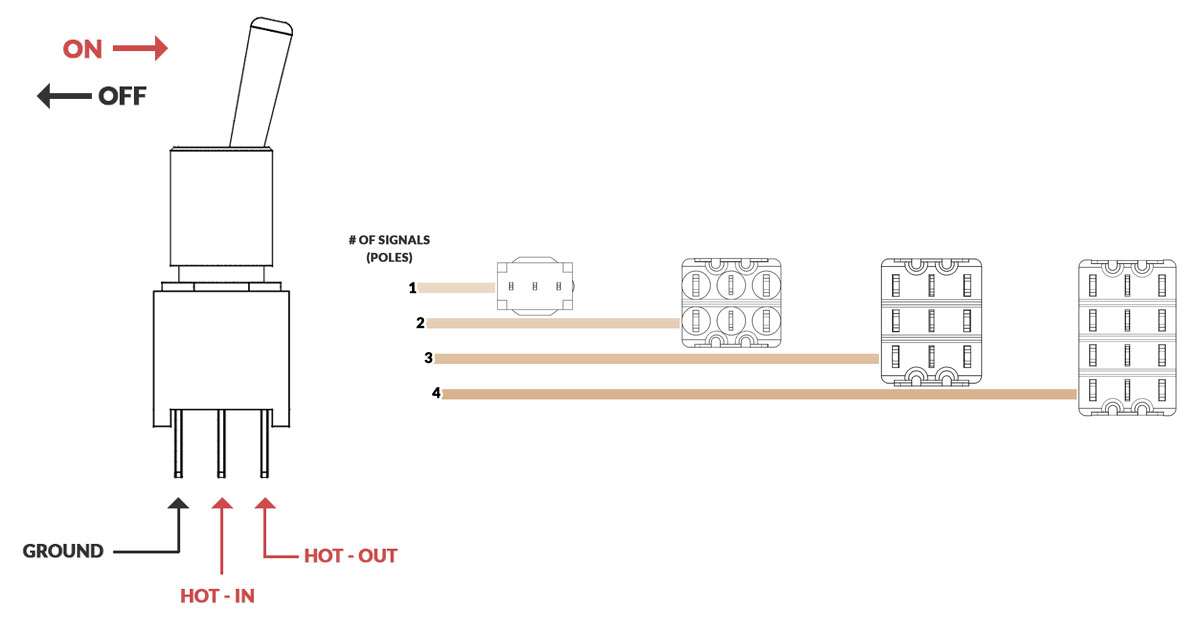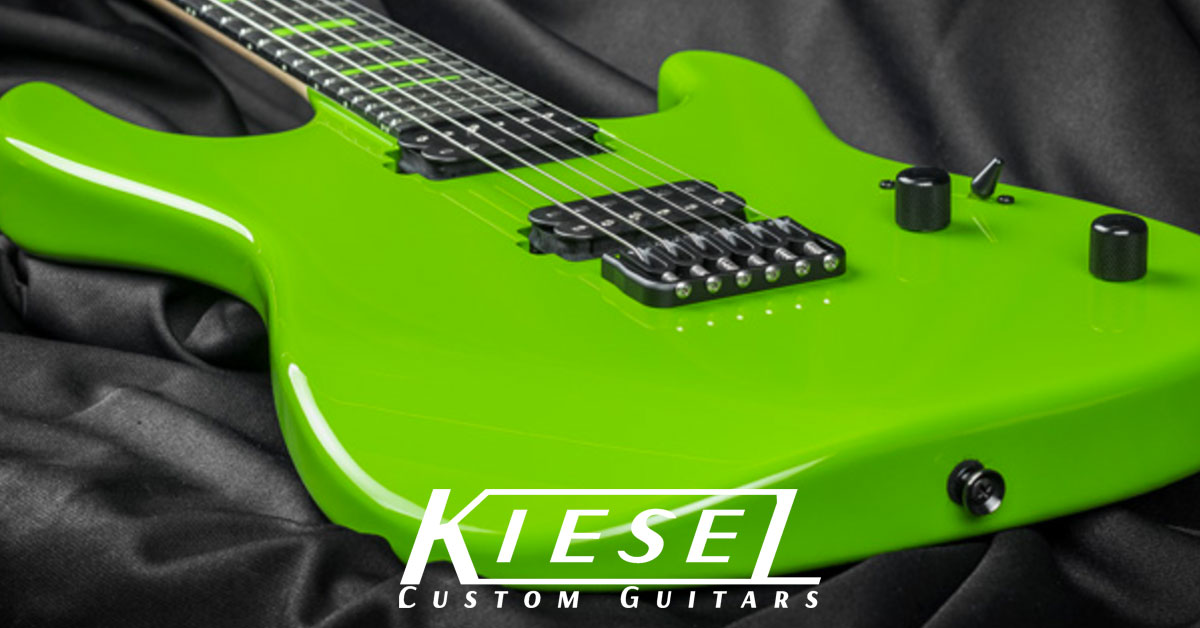Before we begin…
If you’re not familiar with your capacitor’s role in your guitar’s tone, I highly recommend you read through our guide on the subject (“Everything You Need to Know About Capacitors”). It’s not really required knowledge if you’re still capable of following instructions and would prefer to just skip to the results.
But knowing how the capacitor actually affects the frequencies traveling through your guitar circuit will help you understand why having tonecaps made from different materials or with different ratings may be a useful thing.
It’s also a great way to test out whether or not the difference in tone is perceptible to you (if you’re not convinced that it’s worth worrying about).
Tools / parts for the job:
And some cool capacitors, of course:
Is this the same as the Gibson Varitone™ Knob?
No! There’s a major difference between this and the Varitone. If you look at a Varitone’s circuit you’ll see a bunch of resistors wired into the circuit. The explanation is about a page long, so to keep it short I’ll just say that this is to create the effect of a notch filter. Together, the capacitor and resistor values set the points from which the bass and treble frequencies will be bled to the ground, with only the frequencies in between returning to continue toward the output.
Basically, only a small band of frequencies are being let through.
The Varitone knobs are the subject of a lot of controversy. Some people absolutely hate them, others seem to find them quite interesting. Most people just hate them though.
What we’re doing with this mod is simply extending the function of a standard tone knob’s circuit – nothing more, nothing less.

What’s the need for so many tone-caps?
That’s a good question, hypothetical skeptic guy! There’s actually a couple uses for the variable cap knob. The obvious answer is to give a player more tonal options.
I use them for testing capacitors in guitar circuits that are being built. I keep the rotary switch mounted on a piece of plexiglass outside of the guitar and run a couple alligator clips to the guitar’s tone pot / ground. This way I can solder in the best cap with certainty. It’s also been great for me to compare different values and materials to help understand the tonal effects.
How to make and install the rotary pickup selector:
[Click images to view full size in lightbox]
The last image shows how to wire the DP12T switch for two separate tone knobs – the rotary switch engages the posts at opposite sides, so the caps are wired to be the same setting regardless of which side you’re using.
The diagrams above show the legs of the capacitors meeting a line that travels to tone pot. To avoid confusion, the capacitors can all be soldered directly to the lug on the tone pot – the same way you’d normally do for a single cap – to avoid things getting cluttered. This may be ideal if the switch is going to be installed in the guitar permanently.
If you’re looking for more simple modifications for your guitar’s circuit, I recommend the killswitch mod or the 18v mod articles.

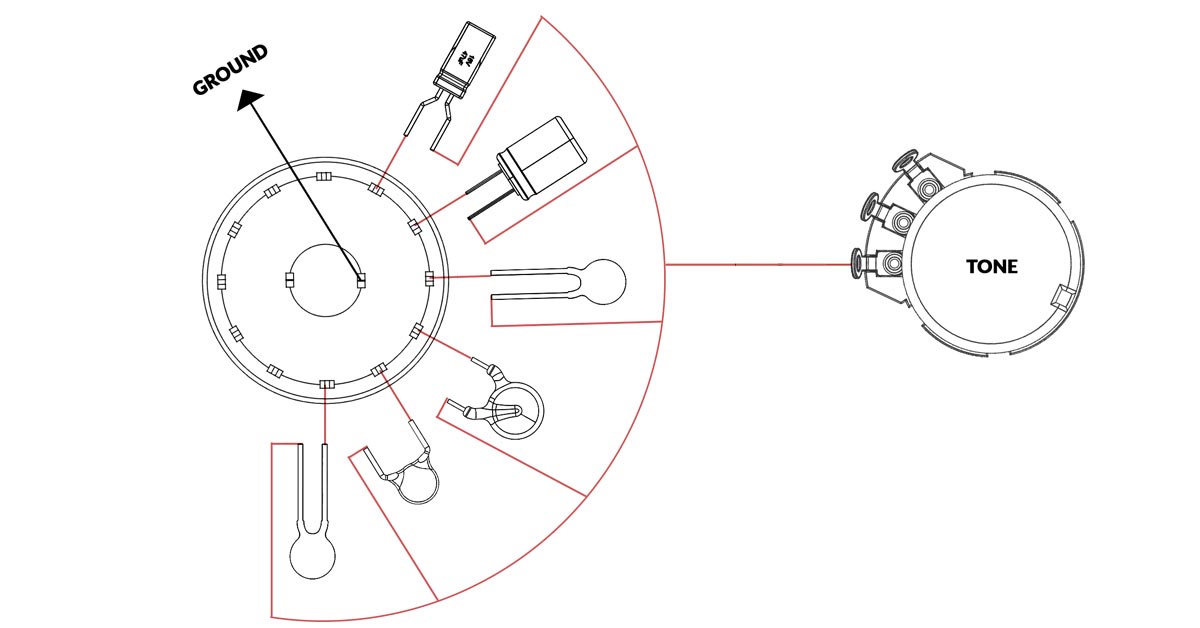
 [Amazon Link]
[Amazon Link]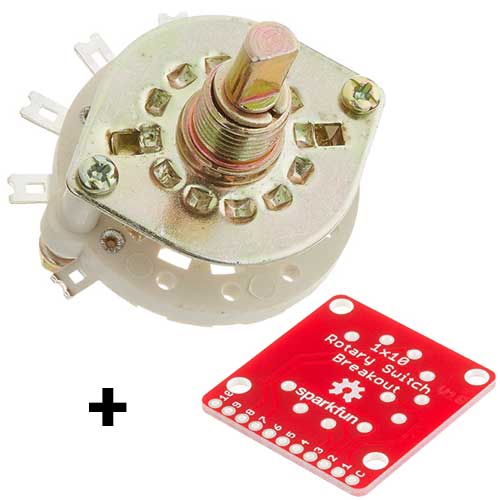 [Amazon Link]
[Amazon Link]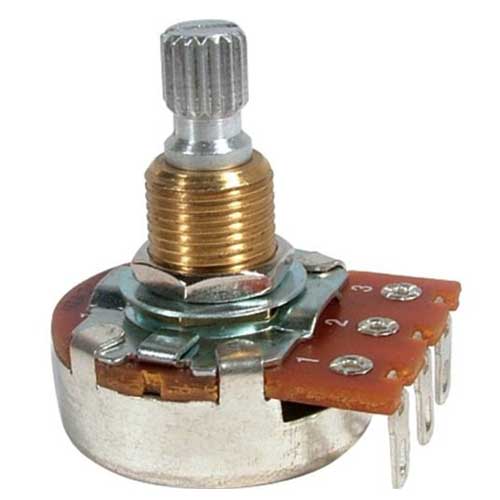 [Amazon Link]
[Amazon Link] [Amazon Link]
[Amazon Link] [Amazon Link]
[Amazon Link] [Amazon Link]
[Amazon Link]